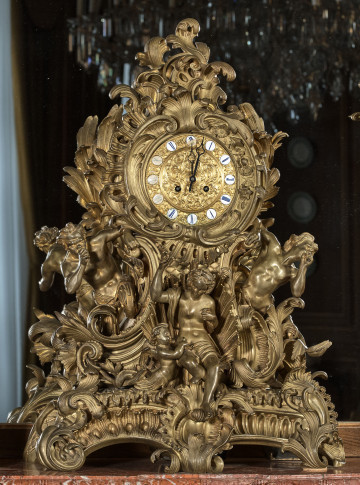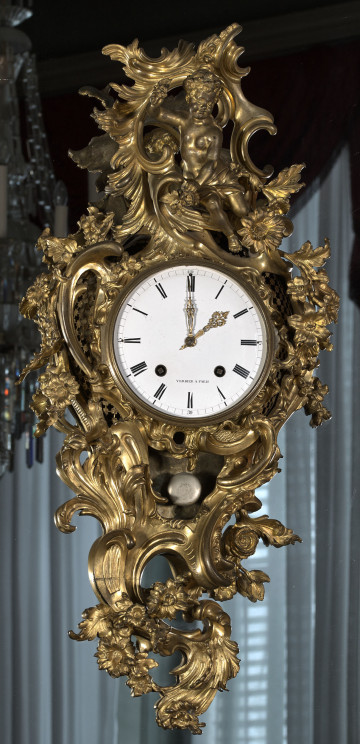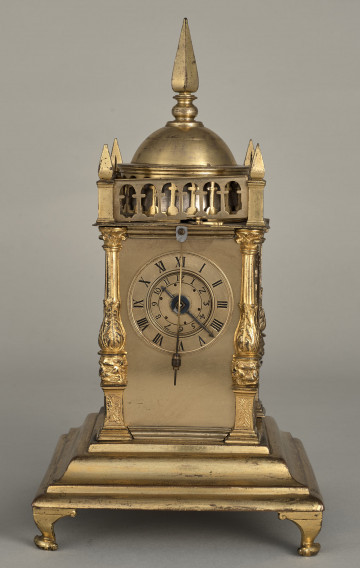
Birth of Venus
18th century
Castle Museum in Łańcut
Part of the collection: Clocks
Since the time of Louis XV's reign, clocks depicting animals have enjoyed great popularity. With the increase of expeditions to the countries of the Orient, exotic animals fascinated people and thus became the favoured subject of artists. In particular, clocks with an elephant or, later, a camel were a popular model since the 18th century. The latter animal, a symbol of wisdom, power, and diligence discovered by Europeans during the conquests of Alexander the Great, is often represented by Westerners carrying some monumental element on its back. This is the case with the clock in Łańcut. The entire small-size composition was made of gilded bronze. On the camel, there is a box with the clockwork, and above it, there is a Bedouin playing a musical instrument. Behind the glass is a white enamel dial with Roman numerals. For Muslims, the camel is an animal of the paradise. Muhammad himself had supposedly ridden and sworn on a camel. In the Middle East, it was believed that camels have the power to repel unclean spirits; however, for the Jews, it was the camels that were unclean animals. The symbolism of the camel is also present in the earliest history of Poland. In the year 1000, King Bolesław I the Brave gave this animal, among other things, to the German Emperor Otto III, and after the Battle of Grunwald, Czech knights received a camel from Jagiełło for their help in the battle against the Teutonic knights.
Author / creator
Dimensions
height: 13.3 cm, width: 8.5 cm
Object type
Clocks
Technique
gilding
Material
bronze
Creation time / dating
Creation / finding place
Owner
Castle Museum in Łańcut
Identification number
Location / status

18th century
Castle Museum in Łańcut

19th (?) century
Castle Museum in Łańcut

17th century
Castle Museum in Łańcut
DISCOVER this TOPIC
Museum of King Jan III's Palace at Wilanów
DISCOVER this PATH
Educational path